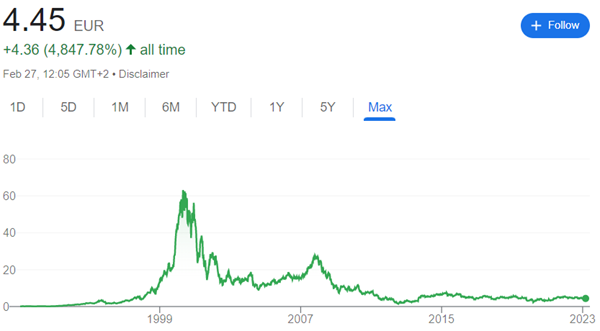Reading through the article, I found out that they are changing their brand identity for the first time in around 60 years. They have also presented a new logo. The reason for all of this is said to be the company will focus on aggressive growth. The recently appointed CEO took over a troubled company in 2020 and immediately presented the plan – to reset the company, accelerate it and scale. Article describes the process as on one third through, as they should be in the second phase. As for the customer part, Nokia said that for now India is their dominant market, however they expect North America to be stronger in the second half of the year. I thought to myself that this looks far more interesting than on the first glance. So, I checked more news.
Another news regarding Nokia that I found on Investing are saying that phone maker of Nokia HMD is setting up a production in Europe. It is also written that there is no big smartphone manufacturing presence currently in Europe, meaning that they would be one of the first or few. The location for now is not known yet, but it gives me a good signal about the company. I perceive them now as a company which has a vision and desire for growth. With this I concluded my fundamental analysis, I have seen enough. I moved to the technical part.
When I opened the chart, I immediately saw that stock reacted very positively to the news, as it grew for 1,5% since the opening. Current price of the stock is 4,44€, which makes it very accessible to wide range of traders. This means that in spite of good news, I am expecting that liquidity will get better. I checked the movement of the stock in the past. The peak of it was in 2000, when the price reached around 61€ per stock. * However, after that it was pretty much downtrend, but I thought to myself, to be honest, they did not have any major innovation or break through to compete with other big brands. It is true that they had some 5G contracts, but that is all. In hopes of new plans coming to life and taken positively by the investors, I am opening a position on long.

Movement of Nokia stock throughout the history. (Source: Google Finance) *
* Past performance is no guarantee of future results.
Link to 5 year chart: https://www.investing.com/equities/nokia-corp-exch








